For the past several decades, growing global climate concerns and surging demand for sustainable products have prompted countless industries to adjust their operations to reduce not only their consumers’ carbon footprint, but also their own. From evolving customer preferences to escalating emissions regulations, the decarbonization process in HVAC has now become simply unavoidable.
In an industry so closely monitored and legislated for carbon emissions and energy consumption, today’s contractors must remain current with the ongoing decarbonization process in HVAC, whether they’re working on residential or commercial buildings. Here’s a quick guide to HVAC decarbonization efforts, including the impact on operations and tips to reach carbon neutrality.
What is Decarbonization?
Decarbonization is the reduction or removal of harmful carbon dioxide (CO2) emissions from the many industries that create them. Sectors including but not limited to energy generation, transportation, and agriculture all significantly contribute to global carbon emissions. These operations heavily rely on fossil fuels, such as natural gas and oil, which powers a higher carbon footprint.
The many environmental impacts of excessive carbon dioxide and similar greenhouse gas emissions have sparked a strong need for decarbonization efforts, particularly in the trade sector. HVAC leaders have continued to experiment and adopt decarbonization strategies, including zero-carbon renewable energy production and use, sustainable working practices, and electrification to name a few.
Impact of Decarbonization on the HVAC Industry
Approximately 20% of all U.S. energy-related greenhouse gas emissions stem from heating, cooling, and powering households across the country. This massive carbon footprint has driven the HVAC industry to develop and implement various decarbonization strategies, from renewable energy sources like geothermal technology to the development of more energy-efficient technology.
While HVAC technology offering higher energy efficiency cannot eliminate carbon use like renewable energy systems can, reduced energy consumption does ultimately translate to reduced CO2 emissions. ENERGY STAR-certified air conditioners, heat pumps, and furnace technology dramatically reduce customers’ energy usage and provide monthly utility bill savings of 10% to 30%.
Taking it even a step further, HVAC electrification has also become a growing decarbonization trend that allows customers to significantly cut, if not eliminate, their use of fossil-fueled equipment. Studies show that U.S. homes can reduce their heating-related climate pollution by 45% to 72% just by switching to an all-electric heat pump. Increased affordability of electric and hybrid HVAC systems recently has provided customers with a more feasible path towards a sustainable future.
Regulatory Shifts Towards Decarbonization
Beyond the rise in sustainable HVAC products, the decarbonization process in HVAC has also led to new HVAC industry rules and regulations. As part of the American Innovation and Manufacturing (AIM) Act, the Environmental Protection Agency (EPA) is taking measures toward decarbonization by phasing out the production and use of high global warming potential (GWP) R-410A refrigerants.
Likewise, the Department of Energy (DOE) has implemented new minimum Seasonal Energy Efficiency Ratio (SEER) ratings for both air conditioning units and heat pumps operating in the United States. These standards went into effect on January 1, 2023, and will remain in place to ensure new HVAC installations offer higher year-long energy efficiency compared to older units.
3 Tips to Prepare for the Future of HVAC Decarbonization
As the HVAC industry continues to embrace decarbonization efforts, now is the time for contractors to do what they can to prepare their businesses — and their customers — for the future. Consider these top tips to prepare yourself and your operations for the future of HVAC decarbonization.
1. Research and Invest in New HVAC Solutions
In the era of sustainable innovations, contractors must monitor the HVAC market to understand ongoing customer demands and what solutions can benefit their operations. For example, heat pump systems have surged in popularity over recent years due to growing affordability and their impressive reduction in carbon emissions when compared to traditional fossil fuel-burning units.
Not to mention, many energy-efficient solutions favoring carbon neutrality — namely electric heat pumps and geothermal heat pumps — also offer certain federal and state tax credits and rebates. These tax break savings act as an excellent selling point for HVAC contractors in the field as well as an incentive that can offset some of the higher costs associated with unit installation for customers.
2. Educate Your Customers on Decarbonization
To streamline the global decarbonization process in the HVAC industry, contractors must better educate their customers, not only on overall decarbonization efforts nationwide, but also on the environmental impacts of their own HVAC technology. This is especially important for customers and homeowners who are weighing their options amid a planned or unplanned HVAC replacement.
In favor of a more sustainable future, take the time to inform customers of the many regulations, tax incentives, and solutions guiding the decarbonization process in HVAC. While cost-effectiveness tends to be a priority for customers preparing to purchase, educating customers on the long-term impacts of a unit’s total energy consumption and carbon footprint is now just as important.
3. Stay Ready and Up to Date with Industry Regulations
While the decarbonization process in HVAC can be an exciting opportunity for homeowners and heating and cooling customers, it may still pose compliance concerns and confusion for contractors. Between new efficiency standards and changes to HFC refrigerant production, many government initiatives surrounding decarbonization have already begun to impact contractors in 2024.
Along with recent changes, contractors should also anticipate that regulatory updates that could impact operations could arise again soon. For instance, the Department of Energy is slated to update SEER ratings for heat pumps and AC units in the next few years, and the Environmental Protection Agency will continue to monitor and amend the use of high global warming potential refrigerants.
Strive for a Sustainable Future with JB Warranties
The decarbonization process in HVAC is just that: a process. As the years progress, contractors and customers alike can anticipate new technology to enter the market that not only offers higher energy efficiency, but also lower greenhouse gas emissions with far less harmful environmental impacts. While we strive for carbon neutrality in the trades, allow JB Warranties to guide the way.
JB Warranties is home to the best extended warranty program in the HVAC/R and plumbing industries, protecting customers against unexpected repair costs and compensating contractors at a fair hourly labor rate. With a JB Warranties-backed warranty program, your HVAC business can extend the life of heating and cooling systems, working together to achieve a more sustainable future.
Explore JB Warranties extended warranty plans today to learn more!
Brian Bohannan
Vice President of Sales at JB Warranties






